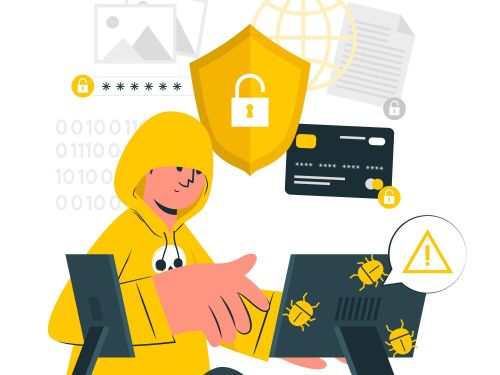Cybersecurity Threats in 2023: What Small Business Websites Need to Know

With an ever-evolving cyber threat landscape, it's crucial for small business owners to stay informed and take proactive steps to protect their websites. In this article, we'll delve into the cybersecurity threats that are on the horizon in 2023 and what small business websites need to know to ensure their digital assets remain secure.
The Shifting Sands of CybersecurityCybersecurity is a dynamic field, and threats are constantly evolving. As we step into 2023, there are several key trends and challenges that small businesses should be aware of:
Ransomware Attacks: Ransomware attacks have been making headlines, and they're not going away anytime soon. Small businesses are often targeted because they may have weaker security measures in place. Regularly backing up data and having a robust incident response plan is essential.
Phishing Attacks: Phishing attacks continue to be a prevalent threat. Cybercriminals use deceptive emails or websites to trick users into revealing sensitive information. Employee training and awareness are crucial defenses against phishing.
Supply Chain Vulnerabilities: Small businesses can be targeted through their supply chain partners. Ensure that your suppliers and partners have adequate cybersecurity measures in place to protect your shared data.
IoT and Mobile Device Vulnerabilities: With the increasing use of IoT devices and mobile devices for business operations, these endpoints become attractive targets for cybercriminals. Ensure that all devices used for work have proper security configurations.
Now that we've highlighted some of the threats, let's discuss practical steps small businesses can take to bolster their website security in 2023:
Regular Updates: Keep all software, plugins, and frameworks up to date. Cybercriminals often exploit known vulnerabilities in outdated software.
Strong Authentication: Implement multi-factor authentication (MFA) wherever possible to add an extra layer of security to your website.
Web Application Firewall (WAF): Consider using a Web Application Firewall to filter out malicious traffic and protect against common web-based attacks.
Employee Training: Educate your employees about cybersecurity best practices, especially regarding phishing attempts and social engineering tactics.
Data Encryption: Ensure that sensitive data, such as customer information and financial data, is encrypted both in transit and at rest.
Incident Response Plan: Develop a well-defined incident response plan to minimize damage in case of a security breach. Know who to contact and how to recover.
As we navigate the digital landscape in 2023, small businesses must recognize that cybersecurity is not an option but a necessity. The threats are real, and the consequences of a breach can be devastating. By staying informed about emerging threats and taking proactive steps to secure their websites, small businesses can protect their online assets, customer trust, and long-term success. Remember, in the world of cybersecurity, prevention is always better than reaction. Stay vigilant, stay secure.